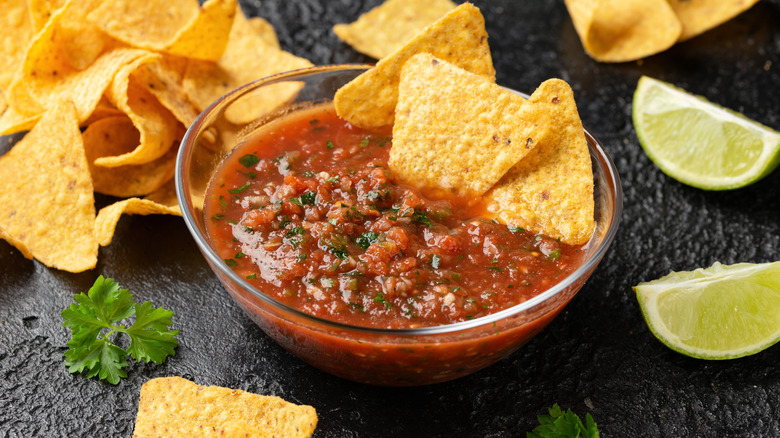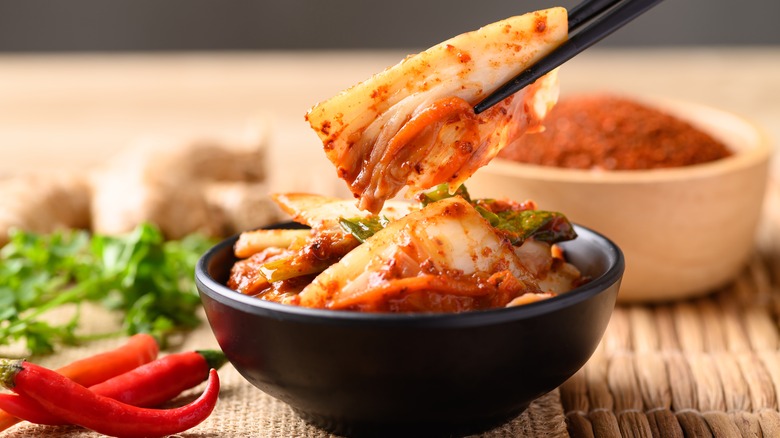Why You Should Be Fermenting Homemade Salsa
Fermented foods are having a moment right now, mostly as a way to enhance gut health by eating things like kimchi, kefir, and kombucha. However, the practice has been around for thousands of years as a way to preserve foods. It's also a really great way to enhance the flavors of vegetables — think pickles and sauerkraut. Enter, fermented salsa. (Really.)
If you've ever made your own homemade salsa, you know the joys of having a jar of it in your fridge for whenever you want it. Fermenting the salsa takes the bright, acidic flavors of salsa and adds depth and umami while giving you a dose of probiotics. You can start with your usual salsa ingredients, preferably at their peak freshness. Add tomatoes, red onion, garlic, cilantro, and peppers, but salt is an absolute must to create the right conditions for safe fermentation, and is vital to ensure that your salsa doesn't spoil (per the National Center for Home Food Preservation). After leaving the salsa out at room temperature for a few days, the fermentation process will have done its job, and you'll have a deeply flavorful, probiotic-bomb of a salsa to enjoy.
The process uses lacto-fermentation, which means you don't need any fancy fermentation equipment — fermentation occurs because of the lactic acid bacteria already found on the vegetables. The brine allows the bacteria to ferment the food while preserving it. The salsa won't keep forever like some long-fermented foods and should be eaten or refrigerated after a few days.
Fermented foods are beneficial and easy to make
Fermentation is a completely natural process in which natural microorganisms like yeasts and bacteria convert carbohydrates into alcohol and acids, which then act as natural preservatives. This process also creates probiotics which are beneficial in many bodily systems, such as immunity and heart health. With more research revealing information about how our gut microbiome influences our mental health, probiotic-heavy fermented foods should be added to your shopping list and your home-cooking calendar.
You don't have to stop at salsa: If you're interested in experimenting with fermentation, it's quite simple and not too dissimilar from making pickles at home. You can use any vegetables — like carrots, radishes, cucumbers, or beets. Prep the veggies by washing and peeling them, and then stuff them in a clean mason jar. For the brine, you'll need one tablespoon of non-iodized salt per cup of water. This prevents bad mold bacteria from growing while keeping your veggies crisp. Make sure nothing is floating above the water or it'll start decomposing during fermentation — investing in some fermentation weights should do the trick. Don't screw the lid on too tightly — while oxygen needs to stay out, the fermentation gasses need a way to escape, or else your jars will explode. Store in a cool, dark place and then move to cold storage to slow the process down. It's ready to eat when it suits your tastes.

